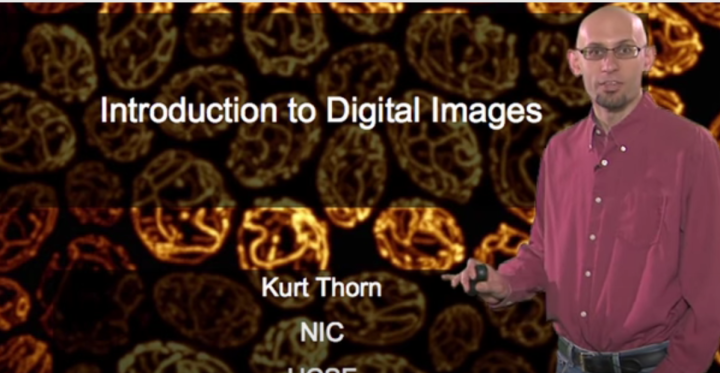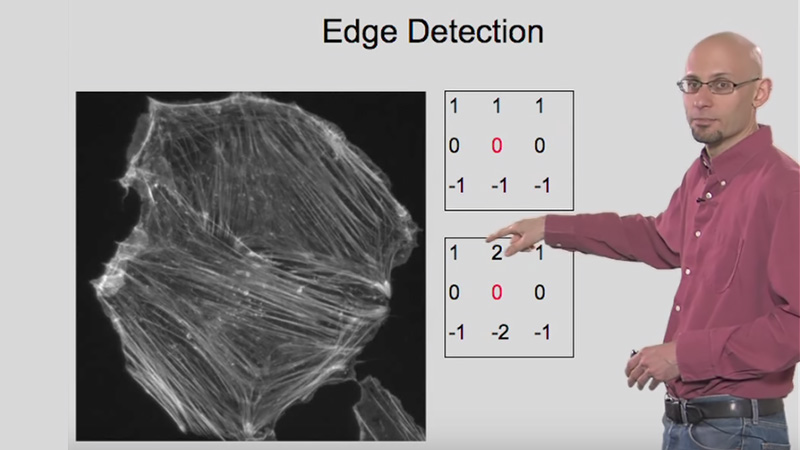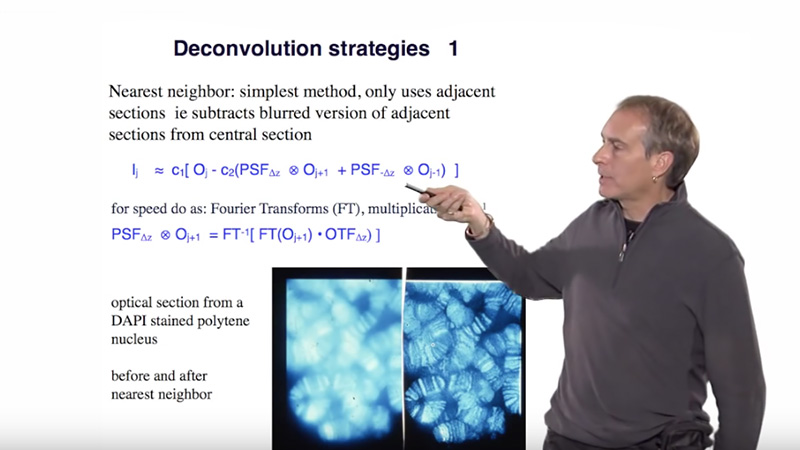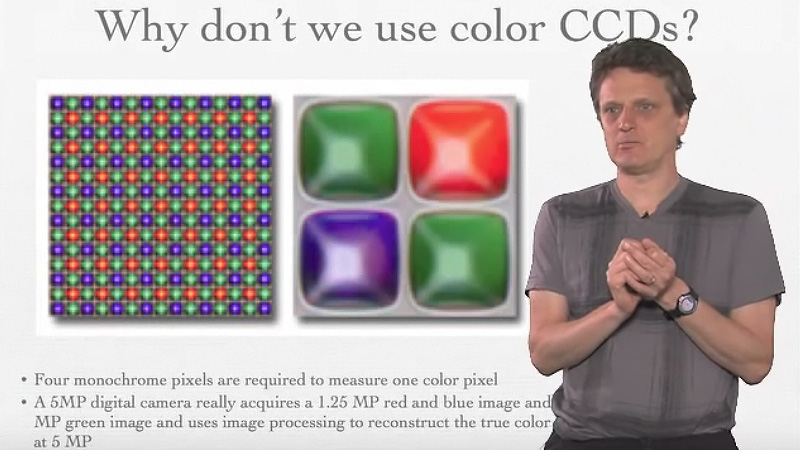Talk Overview
This second lecture on detectors discusses how to match the pixel size of your camera to the optical resolution of the microscope, and it touches on quantum efficiency and its improvement by back-illumination. It then discusses various noise sources (such as photon shot noise, read-noise and fixed pattern noise), ways to reduce noise in the image (such as binning and electron multiplication gain), and shows how measurement of noise can be used to measure the camera’s photon conversion factor.
Questions
- You are always using a 20x 0.75na objective and green (500nm) light on your microscope, which only has a 1x tube lens. Which pixel size should your camera have to make full use of the optical resolution of your microscope (assume that all other factors are equal, and that the optical resolution is given by 0.61 * lambda / NA)?
- 27 micron
- 16 micron
- 6.5 micron
- 4.0 micron
- When selecting a camera, you generally want:
- High quantum efficiency and high read-noise
- High quantum efficiency and low read-noise
- Low quantum efficiency and high read-noise
- Low quantum efficiency and low read-noise
- Back-illuminating a camera sensor improves
- Readout speed
- Readout noise
- Quantum efficiency
- Longevity
- Binning pixels of a camera will
- Increase spatial resolution and increase temporal resolution
- Increase spatial resolution and decrease temporal resolution
- Decrease spatial resolution and decrease temporal resolution
- How many gray levels can an 11-bit camera record?
- 11
- 1111
- 256
- 2048
Answers
View AnswersSpeaker Bio
Nico Stuurman

Nico Stuurman is a Research Specialist at the University of California, San Francisco, in the lab of Ron Vale. Nico combines his expertise in computer programming and microscopy to advance many projects including the Open Source software, Micro-Manager. Continue Reading









Leave a Reply